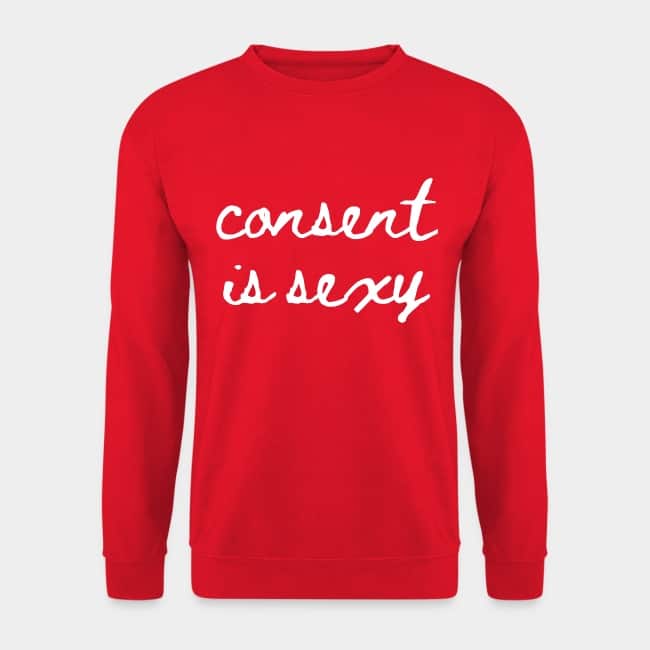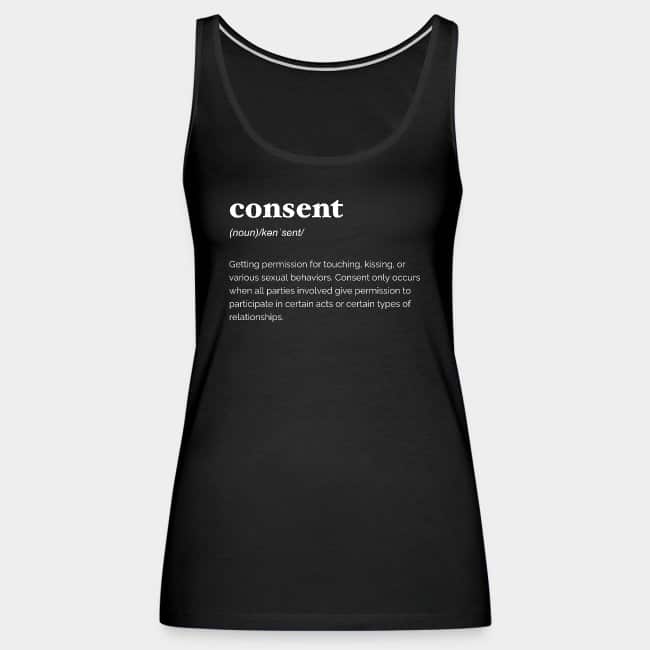What does consent mean?
Consent occurs when all parties involved in a sexual act give permission to engage in certain acts or certain types of relationships. For many people, consent can be as simple as asking if it is okay to touch a partner in a certain way and only doing so if the partner says “yes.”
Consent is an important aspect of sexual relationships because it helps everyone feel respected and safe. In English, the term “consent” is used in this case.
What does mutual consent have to do with BDSM?
Since BDSM games often reach personal limits and can be unpleasant, painful or even dangerous, this consent is important in BDSM.
Typically, consent is obtained through detailed discussions before a session and maintained by agreeing one or more safewords during a session. Negotiations usually take place verbally, but can also be recorded in writing in a type of contract.
Consent can be withdrawn at any time during a BDSM session or relationship. If everyone involved agrees and agrees on the planned activities and their time frame, this is called consensual agreement. If actions are taken without free and conscious consent or if revocations are ignored, this is abuse.
The much-discussed principles of SSC and RACK are often used as the framework within which these negotiations take place. The underlying principle in both is the individual freedom of choice of each person, which must not be interfered with.
Informed consent
Taking the concept of consent one step further, many in the BDSM community use the term informed consent.
Informed consent means that all parties are capable of giving consent and are aware of all necessary facts before giving consent. This is particularly essential for types of play that do not appear consensual, such as forced orgasms or rape play.
In general, a person cannot give informed consent if they are mentally incapable of doing so, are under the influence of drugs or alcohol, are not fully informed of the risks involved, people involved have not told the truth about themselves or others, pressure or coercion was exercised and the like.
Again, strictly speaking, abuse occurs when BDSM is practiced without fully informed consent.
Meta consensus
Metaconsensus could roughly be translated as “over-consent”. What this means is general consent to practices, i.e. a framework is defined within which to play, but without discussing each practice individually. For example, you can agree that sexual BDSM acts can be carried out in private at any time. This means that a part receives blanket permission to carry out these actions even without notice.
However, blanket consent can also be revoked and should ideally be renewed continuously to ensure that those involved still want the same thing.
CNC – Consensual Non Consent
Consensual Non Consent means something like consensual non-consent and is a variety rather than a consensus variant. What this means is that a party receives comprehensive consent in advance and can act as if no consent had been given. So it’s about agreeing that the boundaries of a part can sometimes be exceeded. Often this consent is even given with the intention of it being irrevocable.
CNC is considered a sign of extreme trust and mutual understanding and is mostly used in 24/7 relationships. Nevertheless, CNC is highly controversial, if not frowned upon, in BDSM circles due to concerns about the abuse and safety of the Bottom. It is also argued that blanket consent is often given without precise knowledge of the planned actions due to a lack of information and that the consequences of such consent cannot be sufficiently estimated.
In general, CNC (Consensual Non-Consent) should only be granted when the participants know and trust each other extremely well and share the same likes and dislikes.
Dynamic consent
Dynamic consent is the opposite of CNC or contractual consent. Mutual consent is seen here as fluid and changeable at any time, rather than as a one-off. Inexperienced bottoms in particular are given the opportunity to change their mind when they agree to activities that they don’t know how they will feel beforehand.
A dynamic model of consent aims to ensure that both dominant and submissive people enjoy their interactions. It minimizes the chances of a submissive person engaging in an act that makes them uncomfortable because they feel obligated or fear ruining the mood of the moment.
Ongoing communication is key to the dynamic consent model. Part of the consent can be verbal, part by paying attention to the partner’s body language, as many people are not always ready or able to express themselves when they change their mind. As a rule, however, the body provides information as to whether an action or the increase in an action is unpleasant or undesirable.
The legal side of consent
As mentioned earlier, consent is what distinguishes BDSM from abuse. Many BDSM practices, when viewed from the outside, might appear to be criminal acts. For example, bondage could be considered unlawful restraint, spanking could be viewed as assault, and verbal humiliation or degradation might be seen as insult. This is noteworthy because there are frequent police reports concerning BDSM activities, often prompted by uninformed but concerned third parties.
Many people therefore believe that a written contract that states consent protects them in the event of a false accusation. In fact, so-called slave or play contracts generally only have symbolic and no legal effect. Nevertheless, they can be used as evidence, for example, to determine whether there was justifiable consent to bodily harm. Another option would be to initiate friends together. In the event of a false accusation, there is no guarantee of impunity, but it can still help.
You’re kinky, always playing with consent and want to show it? #ExpressYourKink with the items from the Deviance Shop! Here you’ll find a wide selection of everyday clothing, accessories, and decorative items with matching terms and designs.
Do you like what you see? You can find these and many more clearly ambiguous designs on a wide range of products from shirts and tops to sweaters and hoodies, as well as caps and home accessories in the Deviance Shop! #ExpressYourKink












